
views
X
Research source
Keep your grapes looking and tasting great by picking out a fresh bunch, storing them properly, and eating them within 5-10 days.[2]
X
Research source
Choosing Fresh Grapes

Search for grapes with firmly connected stems. Grapes with brown stems that come off easily when you pull them are often overly ripe, and may quickly spoil. Avoid clusters that are losing grapes left and right and opt for stems that are firmly connected. Although you can likely find them year round, the best time to look for fresh grapes is in the fall, when they're technically in season. Try looking for grapes at farmers markets to find fresher varieties than your average supermarket pick. Grapes at a farmers’ market were typically picked 1-2 days ago, while supermarket grapes have probably been off the vine longer.

Look for yellow-toned green grapes or plump red grapes. Fresh green grapes should range from pale yellow-green to light green, while red and purple grapes can range from light red to a deep, almost-black purple. Choose red grapes that do not have any green tinge to them and are plump on the stems. Some types of grapes naturally take on different colors. For example, Japanese muscat grapes vary from light green to shades of red. Look for other signs of freshness if you’re unsure about the ideal color. Avoid purchasing grapes that have brown spots; this may mean that they're rotting.
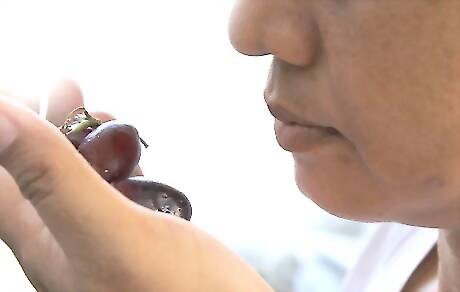
Check for a vinegar scent and brown discoloration. Because of fermentation, grapes that have spoiled may smell strongly of vinegar. Fresh grapes should smell sweet, so if you're picking up a whiff of something sour, look for a different bunch! You can also look for brown spotting on the grapes, which often accompanies the vinegar smell. The same process that causes grapes to spoil also causes wine to taste like vinegar if it isn’t stored properly. If you come across sour wine, that probably means that the bacteria in the grapes has turned into acetic acid, and the wine has spoiled.
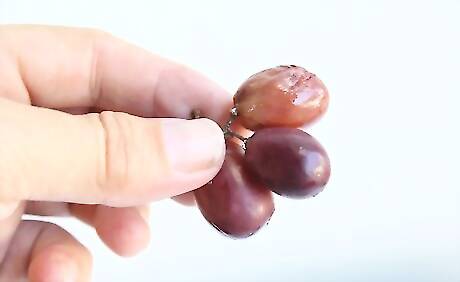
Avoid clusters of grapes that are showing signs of mold. If the grapes have white or gray patches of mold or look furry, choose a different bunch. Moldy grapes will also feel soft to the touch, and might even fall off their stems naturally. Mold is a sign of rot and could quickly spread to the remaining healthy grapes in your bunch. If you see any mold, pick a different cluster!
Storing the Grapes
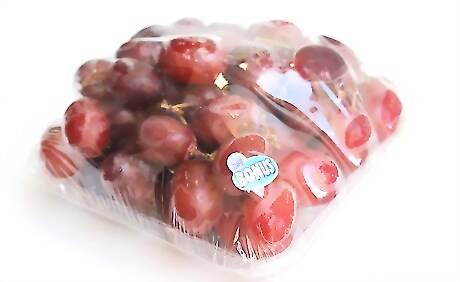
Keep unwashed grapes in their original packaging. Grape packaging is designed with the right balance of ventilation and cover to keep grapes fresh for as long as possible. Try to avoid washing your grapes before you store them, since the water will make your grapes mold more quickly; just store them as they came. You can store grapes in a closed plastic bag, but they will not ventilate as well and will go bad faster.
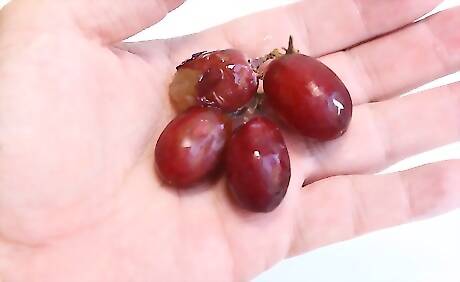
Dispose of grapes that are deteriorating. Check the grape bundle you bought and look for grapes which are falling off, browning, or already molding. If there are any in the bunch, pull them off and dispose of them. These bad apples can affect surrounding grapes. Ideally the clusters you bought won’t have deteriorating grapes on them, but it happens, and the best way to deal is to not let it affect all of the other grapes.
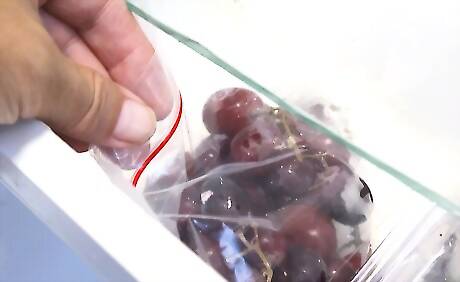
Put the unwashed bag of grapes in a high humidity drawer in your fridge. Grapes preserve the best if they are kept at 32 °F (0 °C) with 90-95% humidity. They will therefore preserve best in a high humidity drawer. If you don’t have a high humidity drawer, you can store the grapes in the back of the fridge, where it is typically cooler.
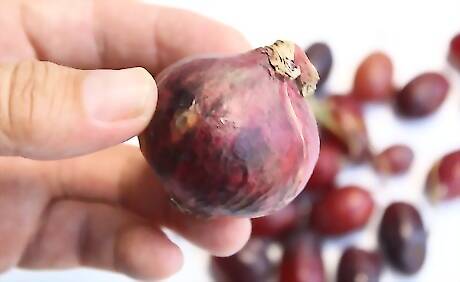
Keep the grapes away from odorous foods in the fridge. Grapes are very susceptible to odor absorption, and their bags have holes in them for proper ventilation. Keep them away from foods with strong smells, like onions and leeks, which can transfer their odor to the grapes and alter the taste. Alternatively, you could keep your grapes near odorous foods that you think might add an interesting flavor, like different varieties of fruits (passion fruit, jackfruit) as a fun experiment in fruit-merging flavors.
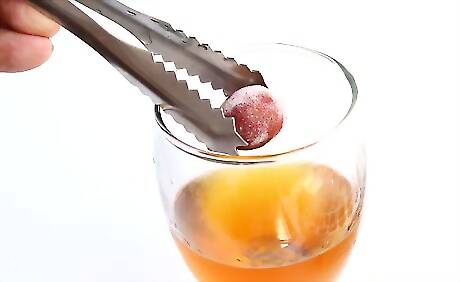
Freeze grapes to use in smoothies, wine, or as a cold snack. Frozen grapes make great wine ice cubes in the summer and can keep flavor for a few weeks in the freezer. Rinse your grapes under cold water, pat them dry, and remove the grapes from their stems. Then, lay the grapes out on a baking tray lined with wax paper, to prevent the grapes from clumping. Don’t try to thaw grapes out after freezing them, as they will taste mushy. Instead, pop them in a smoothie, use them as ice cubes, or eat them as is. Grapes can last 3-5 months in the freezer, but they will lose their flavor much sooner.
Serving the Grapes
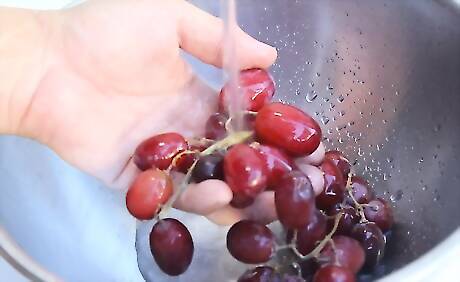
Remove and wash grapes within 5-10 days of storing them. Grapes will start to go bad after just a few days in the fridge, so be sure to eat them as soon as you can. Before you serve them, run the bundle of grapes under cool water and pat them dry with a paper towel. Rinsing grapes removes bacteria and pesticides from the fruit that could be harmful to your health.

Eat grapes as a solo snack or add them to salads, sandwiches, and smoothies. You can simply put grapes in a bowl and munch on them or get creative by making a grape smoothie or adding the grapes to a salad or sandwich recipe. Red grapes make a great addition to chicken or tuna salad, while green grapes can go very well with yogurt and granola. Older grapes are a good addition to smoothies or homemade jams.
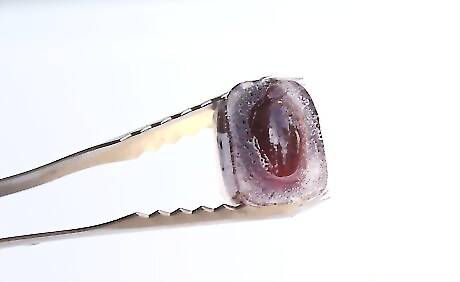
Use your frozen grapes as decorative ice cubes. Frozen grapes are an amazing way to keep your wine cool without worrying about the ice melting and watering down the wine. Simply remove red or white grapes from your freezer and place 2-4 frozen grapes in each wine glass. Use red grapes in red wine and green grapes in white wine to keep a consistent flavor.
















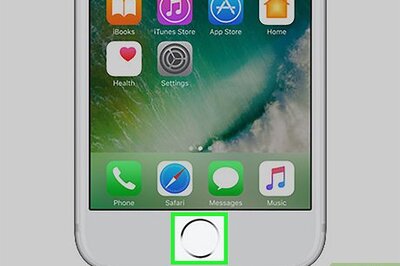
Comments
0 comment